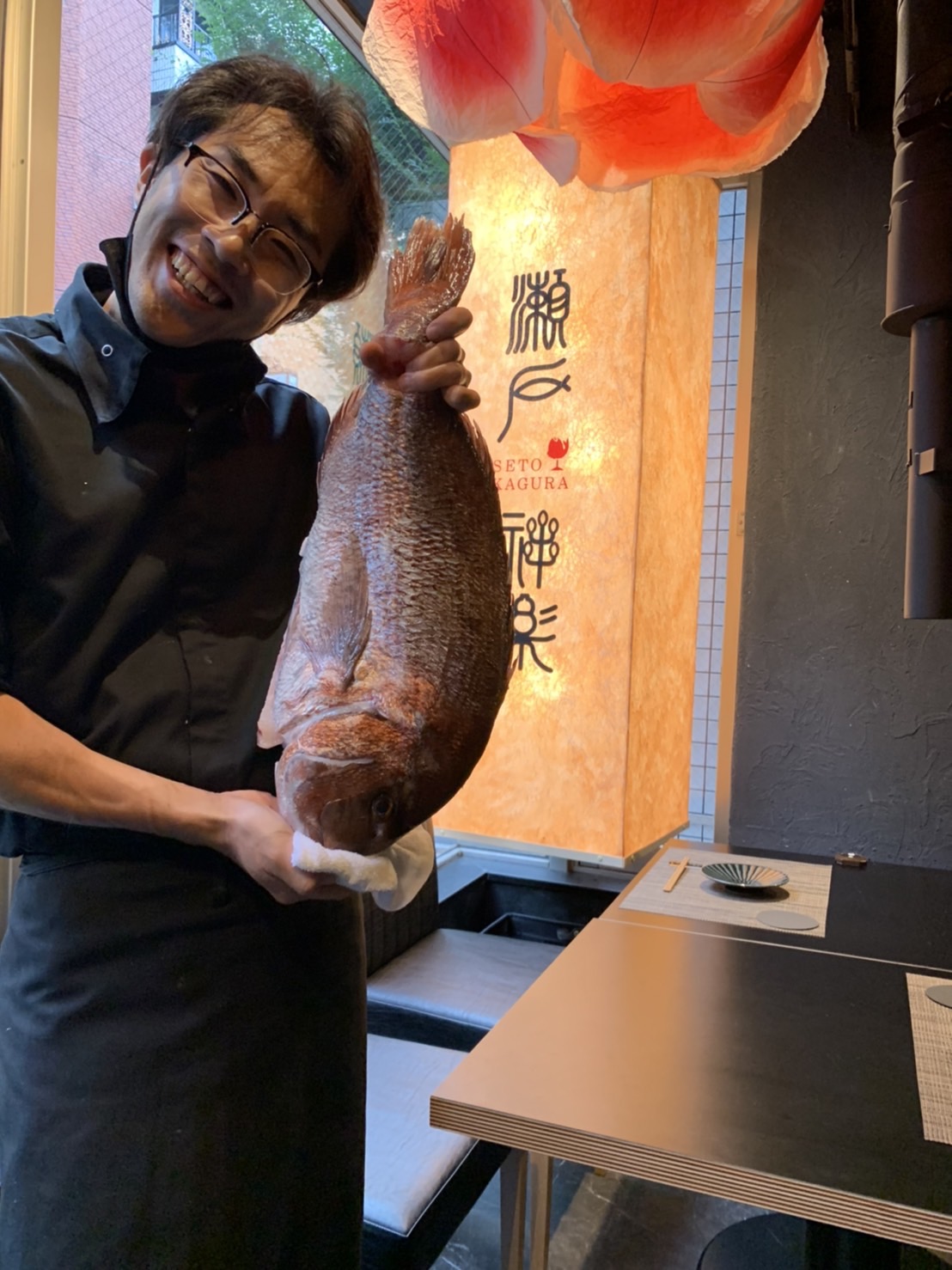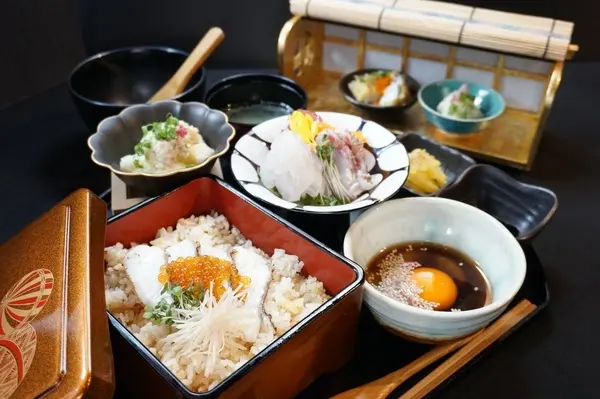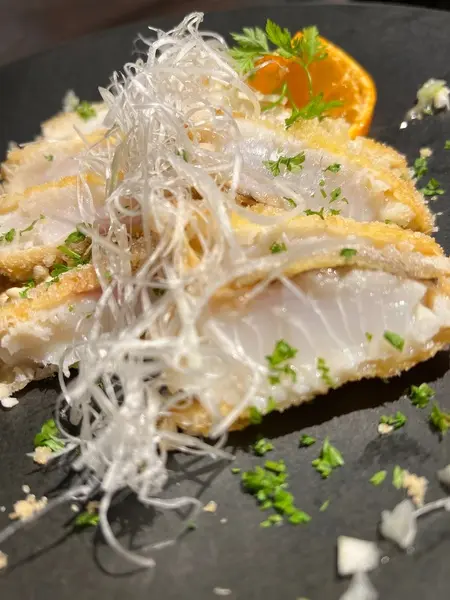Japanese Food History and Culture
Tai from Ehime: Interview at a Sea Bream Restaurant
Ehime is a prefecture located on the island of Shikoku, one of the four major islands of Japan. Known for its picturesque islands, yuzu and ponkan citrus production and possibly the oldest onsen in Japan, Dōgo onsen, it is also famous for its seafood thanks to the bountiful Seto Inland Sea. Today, we met with the chef at Setokagura (瀬戸神楽), a newly opened Ehime specialty restaurant in Tōkyō to discuss his hometown’s cuisine.
Gochisō History: Thanks for having us! Can you please tell us a bit about yourself?
Kawamata Yūta: Thank you for coming! My name is Kawamata Yūta, 42 years old, and I have been working in restaurants for more than 20 years now. I opened my own restaurant, Setokagura, in June 2022 in Kagurazaka, Tōkyō.
GH: What kind of restaurant is Setokagura?
KY: Setokagura is an Ehime specialty restaurant, mostly focusing on tai (鯛, sea bream) cooking.
I come from Nyūgawa, a small village in the prefecture of Ehime, and I wanted to bring the cuisine of my roots to Tōkyō. Ehime is known for its tai, which can be found in abundance in the Seto Inland Sea.

GH: Do you encounter difficulties in cooking Ehime specialties in Tōkyō?
KY: I have contacts back in Ehime, so I source all my tai from there. It wouldn’t feel like a proper specialty restaurant if I was serving tai from other prefectures, so that is an important point. I also have friends there who work as greengrocers and provide me with seasonal vegetables and produce that cannot be found in Tōkyō.
For the rest, I get my ingredients in the Kantō area, especially the common foods. I can’t take the risk of running out of rice in the course of the evening!
GH: What is the most popular item on your menu?
KY: That would probably be the tai sashimi. In Tōkyō, where tai can get pretty expensive, it is typically sliced very thin to make the most of it. But at Setokagura, we serve it Ehime-style, with thicker slices. I really want to bring my roots here, show my home cooking.
We also serve other tai dishes, like tai ochazuke and tai meshi, that we call Hyūga meshi (ひゅうが飯).
GH: Never heard of that one before!
KY: Hyūga meshi is another specialty from Ehime. It’s raw fish over rice with a thick, egg-based sauce on top. The story goes that it was a way the Iyo Suigun (伊予水軍, “Iyo Navy”), a famous band of pirates in the Seto Inland Sea, ate their meals.
Pirates being pirates, they liked getting hammered, so they would drink sake from big chawan cups. After all this drinking, they would understandably get hungry, so they would catch some fishes, filet them and pile them with some rice and anything they had on hand in the chawan. And that’s the Hyūga meshi, a dish you can eat quickly and without fire, which is always a plus on a boat. You could call it a “pirate dish”!


GH: Seafood seems pretty essential in Ehime.
KY: Life in Ehime is defined by the sea. Before the construction of the Shimanami Kaidō (note: an expressway completed in 1999 with several bridges linking Hiroshima to Ehime), the only way to travel between the mainland and Ehime was by boat.
As kids, we would go to the beach to get food. At low tide, we would bring spades and get seashells, like asari (浅蜊) and hamaguri (蛤) clams. When the tide was rising, we would set up fishing lines with insects we found on the way as bait as well as fishing nets, and play around while waiting for a catch. Most often, we would get small fishes like haze (鯊, goby) that we would fry, but sometimes we would catch something bigger, like a tachiuo (太刀魚, beltfish). Occasionally, we could even hop on a boat with adults to go fish in deeper water.
We would bring our haul home and immediately eat it. Doesn’t get fresher than that! Quite frankly, when I first moved to Tōkyō, I was shocked by the sushi and sashimi I found. People born here are used to it, but when you grow up fishing your own food, there’s a world of difference in freshness.
“Life in Ehime is defined by the sea.”
GH: So preparing tai is a way for you to bring this world here.
KY: Indeed, although there are of course constraints on what is logistically doable. Freshness is also a reason why I chose to exclude other fares from the menu. To appeal to a wider audience, I could serve all kinds of fish, as well as meat and various vegetables, but I would need to keep bigger stocks of everything. I wouldn’t be able to ensure the freshness of my ingredients. So even though I contemplated adding other dishes, I ultimately decided to focus solely on tai cooking.
Moreover, tai is a fish that can be prepared with very little waste. I use heads, bones, more or less everything. Although we haven’t reached zero waste yet, this is also something I keep in mind and try to improve.

GH: The sea in Ehime seems bountiful indeed!
KY: It’s really clean and beautiful. I’ve read that when Europeans came there in the Meiji era, they found the Seto Inland Sea beautiful, and compared it to the Mediterranean.
GH: Back to Setokagura, what was the most difficult part until now? And the most enjoyable?
KY: We’ve been open for a little bit over 3 months now, so there still aren’t a lot of customers. It’s quite challenging to be seen and get people to come, especially with a somewhat obscure concept like tai cooking. But this makes it all the more rewarding when there are happy customers telling me they didn’t know you could do things like that with this fish.
GH: Sounds like you have strong convictions about cooking!
KY: Hahaha, of course! Even though I have my doubts sometimes, I still want to proudly represent where I come from!
GH: Anything you would like to add before we wrap up?
KY: With Setokagura, I want to make a place where you can not only eat and drink, but also share and discuss with people, where you can feel at home. Hope to see you soon!
Gochisō sama deshita!
Setokagura is located in the Shinjuku ward of Tōkyō prefecture:
〒162-0825 Tokyo, Shinjuku City, Kagurazaka, 3 Chome−2−9 ナカノビル 2F
The closest train station is Iidabashi station